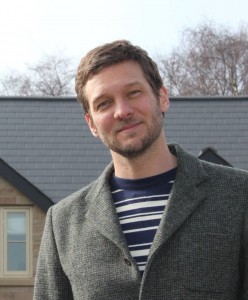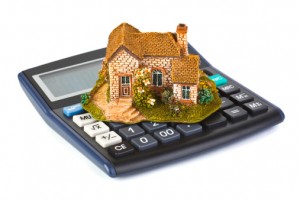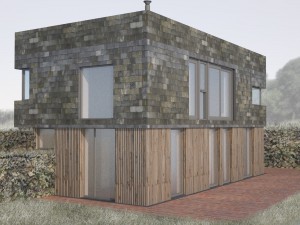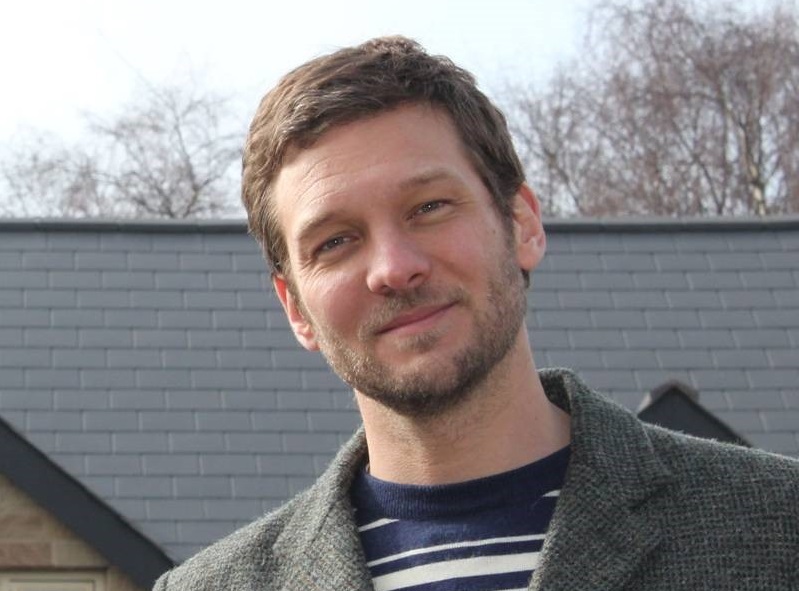
Ever wondered if you could cut your energy bills – by as much as 80 per cent? Celebrity designer Charlie Luxton says it’s entirely possible if you build your own home. Elizabeth Henry reports.
Architectural designer Charlie Luxton of More4’s “Building the Dream” is evangelistic about eco-friendly design, and he practices what he preaches.
The 40-year-old, his wife, two kids and a dog live in North Oxfordshire in a restored thatch cottage, and they’ve got their energy bills down to just £200 per year.
In between his TV duties (he’s currently working on Shore Thing, a six-part series about Britain’s coastline), Luxton helps clients create their own low-carbon, energy-efficient dream homes. In his spare time he’s also helped turn his village of Hook Norton into a model of sustainability.
What is sustainable self-build?
Sustainable architecture is a huge topic. As well as aspects like insulation, airtightness, thermal modelling and low-carbon energy sourcing, it’s about making the building process as green as possible, prioritising local materials and ensuring the house will last, Luxton says.
“Sustainability encompasses all of it. In the truest sense, it’s a holistic process that includes where you get the materials, how far they travel and so on. It’s also down to the internal quality that you create.”
For many people the idea of an eco-friendly home brings to mind expensive technology such as solar panels. But in fact it’s more important to use the right building materials and ensure the home is well-insulated and airtight. Simple design tricks such as house shape and window orientation make a big difference for energy efficiency, Luxton says.
The benefits of self-build

Creating your own home from scratch is a huge job, and can be daunting, especially when there are easier alternatives like self-build kits or just buying a new house as part of a bigger development.
But there are plenty of good reasons to build your own sustainable home, even if you don’t consider yourself a greenie.
Try these for starters: comfort (warmth in winter, cool in summer), maximum use of sunlight, and the added plus of saving money on energy bills.
Houses that are energy-efficient also tend to be smaller and easier to look after (as long as you don’t own too much clutter). And of course you’ll have a unique house designed just for you.
The toxic chemicals found in many building products aren’t often considered but they should be a real concern, especially for parents, Luxton says. “We’re introducing thousands of toxic chemicals like formaldehyde into our houses and not many are tested. And almost none of them are tested in a cocktail approach, where you’re mixing different kinds of chemicals together.”
Facing the future
Low bills are obviously a motivation for many self-builders, whereas being eco-friendly seems an added extra – nice to have, but not a priority. Luxton disagrees, but also admits his efforts are “probably a drop in the ocean” and we may have reached the point where humans’ actions can’t stop climate change.
“You can easily say what’s the point…but I think you’ve still got to do your bit,” he says.“It’s about the planet for me. I’ve got kids and I want our environment to still be okay for them,” he says. “I see sustainability as being underneath the subject of good design. It’s the foundation. It’s a base value judgement.”
He also points out that if global warming is a foregone conclusion then we need to plan ahead and be resilient. A house built now needs to be habitable for a lifetime. If in 50 years the UK’s climate will be closer to that of Sicily, it makes sense to build houses that can cope with those temperatures.
Will it fit my budget?

Building sustainably will certainly cost extra, but that’s only part of the picture, Luxton says.
“You have a budget to build a house, and a budget to run a house. If your normal energy bill is £1,000 or £1,200 a year for a four-bedroom house and you can get that down to £70 a year then arguably you’re saving £800-£900 a year – or more,” he says.
“The average self-builder lives in the same house for 22 years, so that’s another £20,000 they have to play with to make the house more sustainable.
“And clever thinking doesn’t have to cost you a lot more. You just have to have the right designer.”
Finally, Luxton points out more and more people are realising how desirable a sustainable home can be. They’re likely to become increasingly valuable – so build one now and you could reap the rewards in future.
[box style=”2″]
[tabs]
[tab title=”Case Study”]
Know what you’re getting into

Tara and Dimitri Murphy had always dreamed of building their own house based on sustainable principles. Dimitri, a physicist, was intrigued by the idea of an energy neutral home, and both agreed that the chance to minimise both energy bills and their impact on the environment was too good to pass up.
They hired Charlie Luxton as architectural designer, and at the end of August the pair and their three children moved in to their new house.
The Murphy’s home is small but comfortable. Insulation and airtightness – plus a mechanical ventilation system – keep heat loss to a minimum. Solar heating and a photovoltaic system could eventually bring their energy use down further.
But Tara admits the self-build process wasn’t plain sailing. On her blog (futuresimplepassive.blogspot.co.uk) she details the many setbacks they encountered, such as groundworks issues which put them behind schedule and well over budget. Dimitri now estimates they will have spent £310,000 on the building by the end of the project – well over the £200,000-odd they originally budgeted.
Plots of land in England are notoriously scarce, and planning regulations are complex. But getting mortgage finance was “the real nightmare”, Tara says. “It was so difficult because mortgage lenders are generally very risk averse.”
The couple sought an accelerator mortgage, where cash is released prior to each stage of building to pay for tradespeople and materials. But with few options available to them they ended up borrowing from a standard self-build lender, who wouldn’t lend the money until after each stage was finished. In the interim the Murphys were forced to borrow from friends and family.
Eventually Tara had to take a step back as the frustration of finance was getting her down. She thinks lenders’ lack of flexibility is partly due to strict affordability rules, while complex planning regulations also favour big developers over small self-builders.
While it’s been worthwhile in the long run, Tara warns anyone going into self-build to do so with their eyes wide open. Looking back they would have done things differently – like getting a quantity surveyor on board.
Be prepared for the project to take over your life, she says. “It’s like having a baby; it’s an all-consuming process – I know every heartbreak that went into it,” she says. “But that’s fine because I feel like I’m very much a part of the team.”
[/tab]
[/tabs]
[/box]




